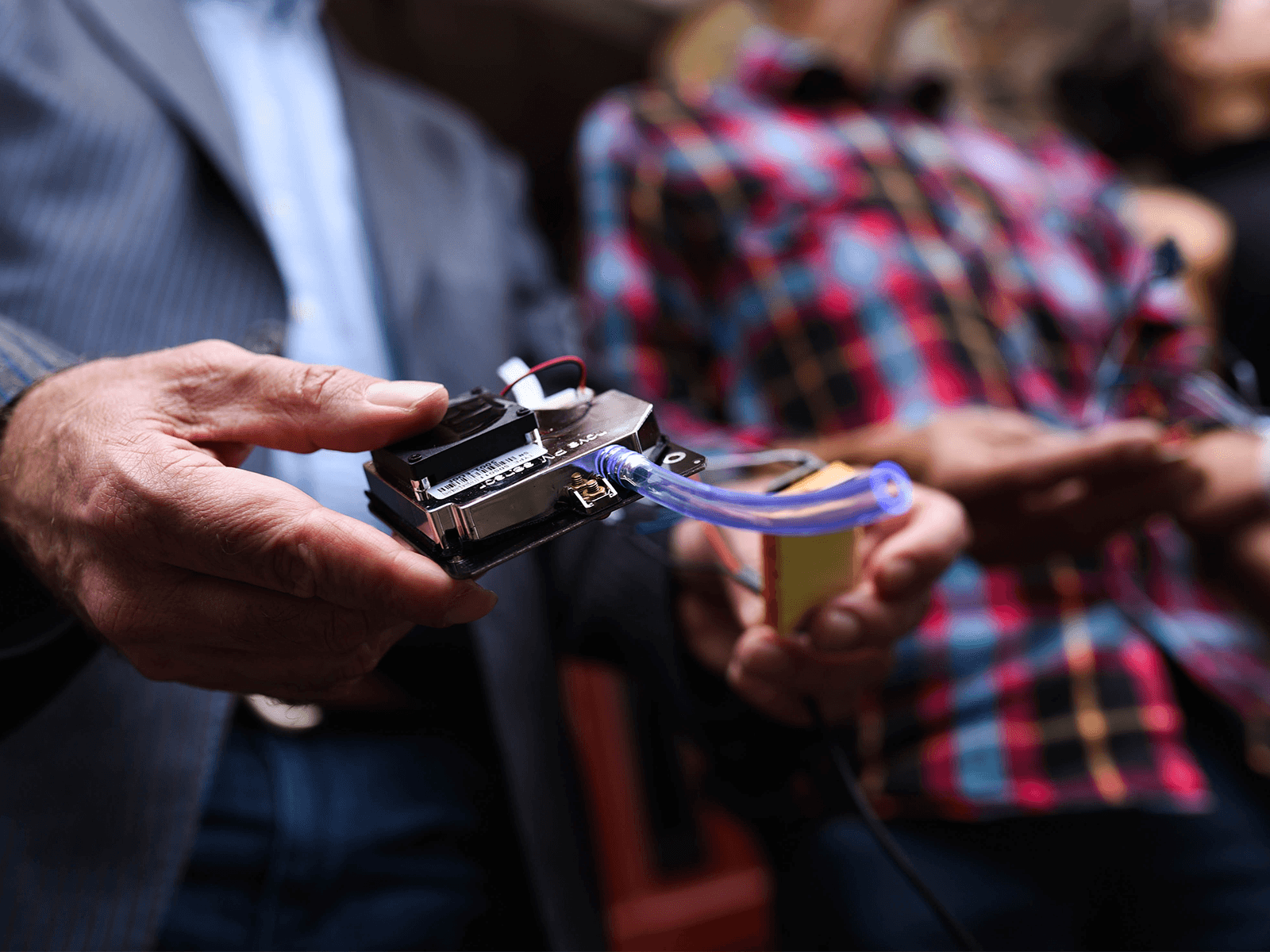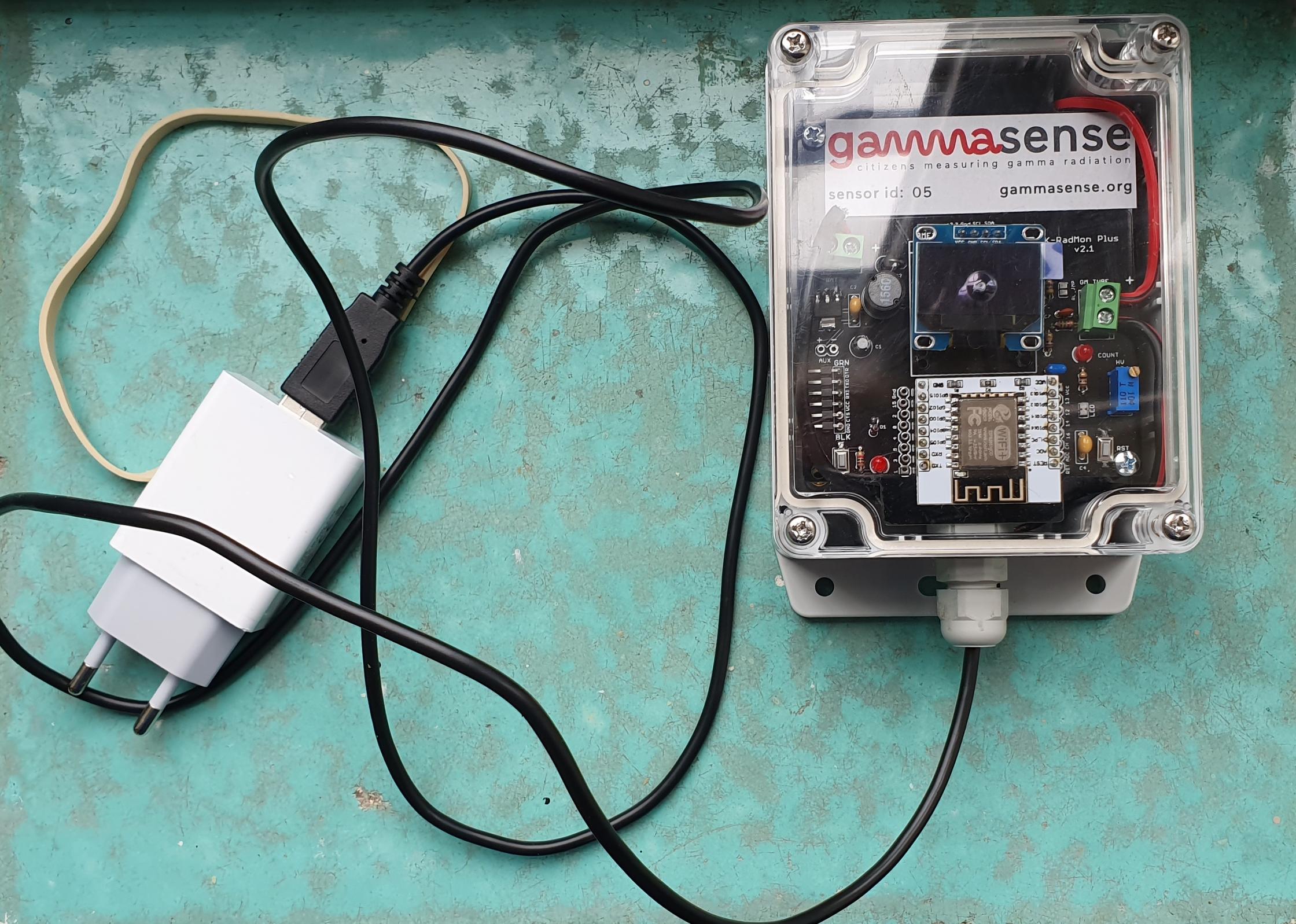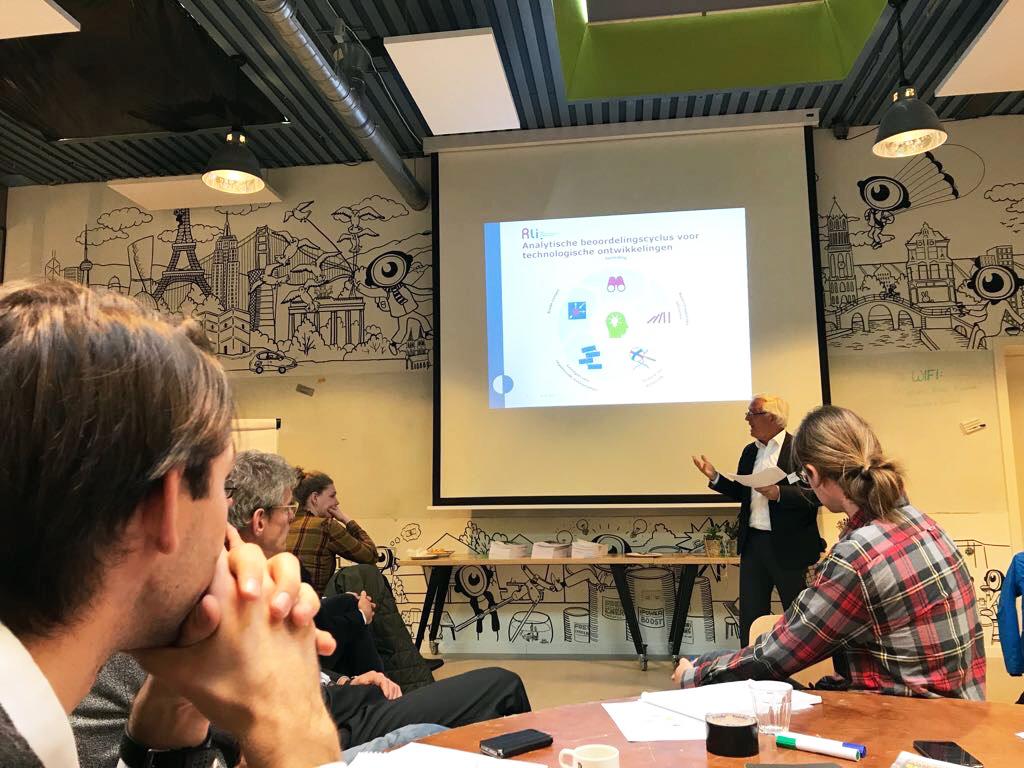GammaSense is a prototype internet-of-things sensor that makes it easy to measure radiation. It was developed by Waag and WISE Nederland in collaboration with RIVM. The following text on GammaSense was written for- and showcased during Dutch Design Week 2022 on Waag's 'Open Design Now!' future dome.
An internet-of-things device
The GammaSense project arose from the risk imposed on European citizens when an emergency involving radioactive radiation takes place. How can we enable citizens to measure levels of radiation? And what low-cost tools provide us with the best and most accurate results?
The GammaSense device is a Geiger counter. It sends its measurements to a server. Therefore, we could call it an internet-of-things device. Its main components are a GM tube (Geiger-Müllertel tube), a high-voltage circuit, and a microcontroller with WiFi.
Gamma radiation consists of particles that penetrate the wall of the GM tube. The tube is filled with gas. When the radiation particles and gas react, a chain reaction is caused in which free electrons are detached from the atoms of which the gas consists. These free electrons ultimately result in an electrical pulse that can be registered by the microcontroller. The amount of pulses per minute, or CPM, represents the amount of radiation that is present. Through its WiFi, the microcontroller sends the CPM measurement to a server every minute.
The hardware used in GammaSense is based on designs that have been around for years, for example in hobby magazines for electronics. The high voltage circuit in the GammaSense is almost the same as the ones that were made twenty years ago.
The hardware can handle different types of GM tubes. After comparative tests, we chose to use the SBM20 GM tube for the GammaSense. During the Cold War, this type of tube was produced in the Soviet Union in large numbers. Today, it is still in circulation. Because it is cheap and reliable, the SBM20 is popular among hobbyists. We had to make some effort to get it and ultimately bought the tubes on German eBay. Working with widely available and standard components is very important in open hardware, as it makes it easier for others to build your design.
Quicker response in case of emergencies
Gamma radiation (γ radiation) is invisible electromagnetic radiation. It contains more energy than ultraviolet light and x-ray. Gamma rays, just like light and radio waves, are a form of electromagnetic radiation. They consist of vibrating electric and magnetic fields.
In contrast to other types of radiation, gamma rays contain so much energy that when they pass through a material, the chemical bonds can break. Electrons can then get detached from atoms. This is called ionisation. It can be both useful and dangerous.
If the human body is exposed to excessive amounts of gamma radiation, chemical bonds in the molecules of our cells will break down, causing the living tissue to be damaged. In places where gamma radiation is produced, for example in nuclear power plants, the necessary protective measures must therefore be taken.
Together with WISE International and RIVM, Waag developed GammaSense to enable citizens to measure radiation with open source sensors in order to create a more detailed and complete data network that allows for a quicker response in the case of emergencies.
Continuity is key
Co-developer WISE Nederland: ‘The GammaSense project grew out of a common workshop of Waag and WISE, investigating the possibilities to use mobile telephones to create a radiation measurement network. After further investigations, it appeared that a combination of many (thousands) of mobile phones with statistical data processing could possibly yield radiation maps.
However, mobile telephones are not very useful as stand-alone measurement devices, because of the inaccuracy of the measurements. For that reason, in cooperation with the Dutch nuclear regulator's technical support organisation RIVM, Waag and WISE looked into the development of a cheap gamma-radiation measurement device that in time could be easily replicated. One of the crucial inspirations for the GammaSense measurement device was the bGeigie nano by Safecast, an open network that does spot-measurements of radiation around the world.
Although the initial effort was impactful, the project unfortunately had to be discontinued due to funding limitations. Above all, this impacted the technical support that the GammaSense devices needed. For the use of GammaSense, a constant data stream over local WiFi connections needs to be secured, the website needs dedicated and continuous maintenance, and the devices need to be calibrated to deliver read-outs. An active programme with a few educational sessions per year could expand the network and collect the experiences of users for further use. For a project such as GammaSense, continuity is key.’
The issue of openness after calamities
Since the seventies, there have been widespread concerns about the potential health risks of nuclear power plants. When the power plant of Chernobyl exploded in 1986, it was a Swedish monitoring network that alerted Europe about the disaster, so that protective measures could be taken.
In 2011, the nuclear disaster in Fukushima made clear that even though more technology has become available, this does not necessarily mean that citizens have the tools or means to receive objective information when they (most) need it.
During the GammaSense project in 2015, it still usually took three days before citizens could be reached with information about incidents concerning nuclear radiation. Governments often struggle with the issue of openness whenever calamities occur.
GammaSense was the first website on the internet that made it possible to directly measure gamma radiation, without having to install an app. The data from GammaSense was open as well. This means people can instantly copy files and begin to mobilise their environment to join in on the measurements.
Good examples of functioning citizen’s radiation measurement networks today include the OpenRadiation project from the French nuclear regulator's technical support organisation IRSN. And the saveecobot radiation website in Ukraine, which combines official measurement data with citizen measurement points. The latter currently delivers vital updated radiation data about nuclear installations like the Chernobyl site, the Zaporyzhzhia and Southern Ukrainian nuclear power plants, while the country is at war.
What the makers of GammaSense said
Lodewijk Loos (maker at Waag): ‘For GammaSense, there was no groundbreaking hardware development. It was not about inventing a device, but about the goal of the project: doing the measurements in a way that meets our values. If you can then build on the good work of someone else, that's great.’
Jan Haverkamp (WISE Nederland, Senior Kernenergie Expert): 'The Gammasense project grew out of a common workshop of de Waag and WISE, investigating the possibilities to use mobile telephones to create a radiation measurement network. After further investigations, it appeared that a combination of many (thousands) of mobile phones with statistical data processing could possibly yield radiation maps.
However, mobile telephones are not very useful as stand-alone measurement devices, because of the inaccuracy of the measurements. For that reason, de Waag, WISE in cooperation with the Dutch nuclear regulator's technical support organization RIVM looked into the development of a cheap gamma-radiation measurement device that could in time be easily replicated. After funding ran out, the project had unfortunately to be discontinued.
With modest funding and skilled capacity, this could be restarted. What would be needed is dedicated technical support, dedicated and continuous maintenance of the website and an active programme of a few educational programmes per year to expand the network and bring the experiences of participants to further use. Continuity is key! Of course, further investigations into the needed statistical skills and software needed to bring in the power of mobile telephones to create radiation maps would be an intriguing pathway as well.'


